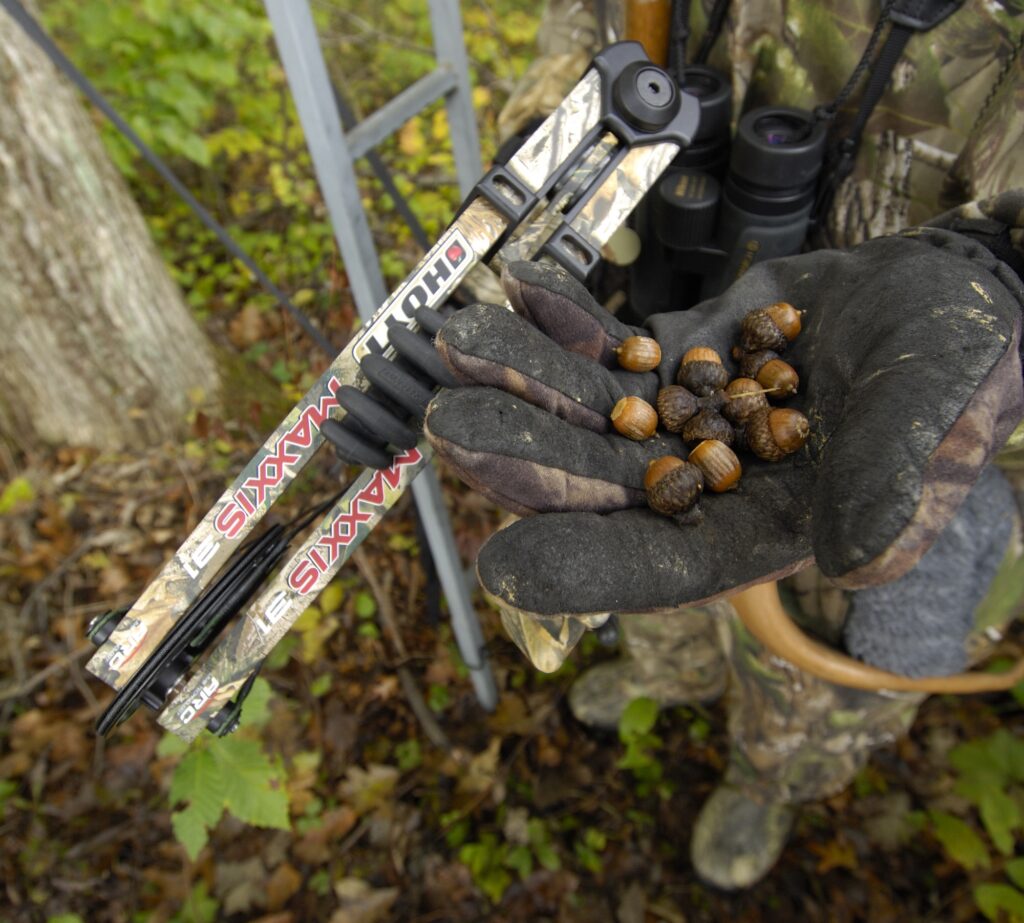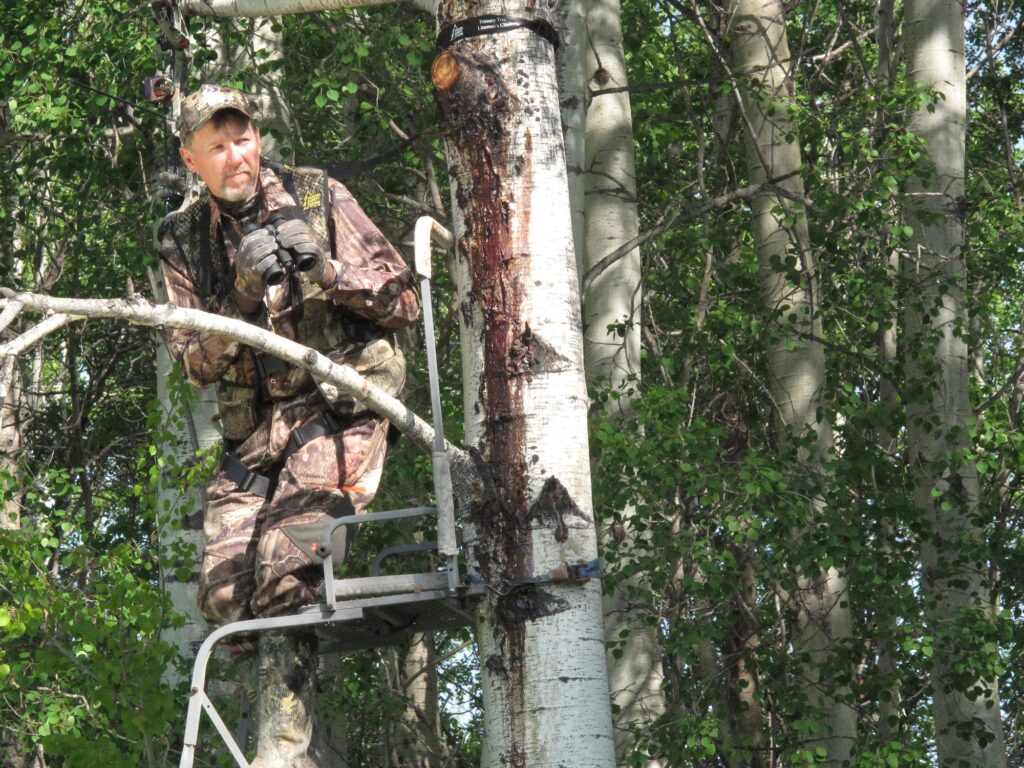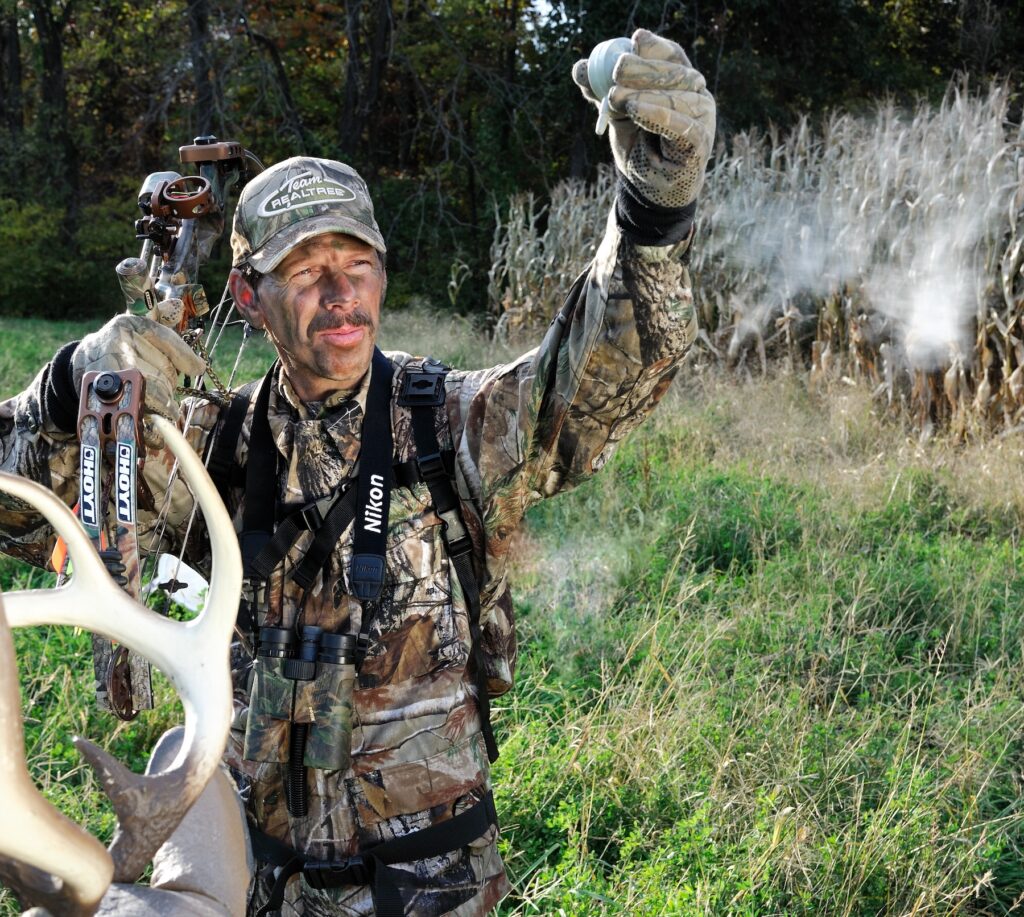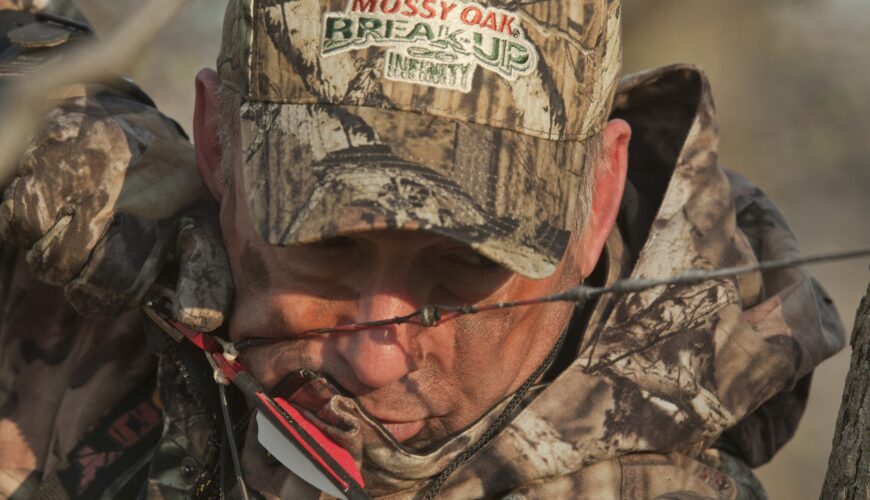Tactics
Sporting Clays Technique: How To Deal With Teal
November 24, 2025 •Mark Chesnut
October 6, 2025
The weather is still warm, the insects still annoying and the deer aren’t moving like you want except at the edges of the day. It doesn’t feel like deer season by any classical measure, but don’t let that stop you, grab your bow and get out there. The earliest days of the year that a hunter can hit his stand can still be some of the best. Here’s how to make the most of those early season deer stands.
“I love hunting deer in the early season,” says Alex Rutledge, the owner and host of American Roots Outdoors. “After a long summer, I can’t wait to get out there so you can bet I’m on a stand those first days.”
But unlike the rut, when a hunter can plop down on his favorite stand and sit there with a reasonable hope that he’s going to see deer on the move, the early season requires a little different strategy.
“You need to have a game plan,” says Rutledge. “You can’t ever assume that deer are just coming to a field because it looks good to you. And the stands that work well during the rut may be useless in the early season when a deer’s thoughts are more on food than breeding.”

White oak acorns are the preferred food of whitetails. Bill Winke Photo
With most states bow-only right now, hunters can be in a tree long before deer are beginning to rut (or gun hunters in the field). That means deer are still fairly relaxed and food is the driving obsession in the whitetail’s day as they seek to bulk up energy stores for the demands of winter and the rigors of fighting, chasing and breeding of the pre-rut and rut.
Prime food sources are the first place Rutledge scouts out, as well as isolated water sources and bedding areas.
“Deer are almost exclusively going to be moving between bedding and feeding areas at this time of year and if you can find a route that includes water, then you’re on to something,” the Missouri hunter says.
Crop fields are an obvious early season choice for deer, particularly soybeans and corn. Soybean fields are easier to glass and scout from a distance because deer are easily seen in the shorter plants, and when beans are coming in, deer prefer them over virtually anything else. In the South where cotton has made a comeback in the past 20 years, whitetails will also move through the fields browsing at the greened up leaves. Food plots planted in clover and peas are also key spots as well.
Georgia hunter and land manager Jeff Banks says iron clay peas, also known as cowpeas, are among some of the best plantings to include in a plot because they grow quick and deer love them.
“(Deer) will not forsake peas for anything except for acorns,” Banks says. They can even pull them away from nearby soybeans
The food item that trumps them all is white oak acorns. In years where they are dropping early, you can expect to see fewer deer feeding in the open. In this situation, you’ll need to locate spots in the woods where acorns litter the ground, particularly where they are close to thick areas that provide good bedding cover.

An existing stand can work in the early season, but scout from it using binoculars as well to identify better locations where deer are moving into fields and adjust accordingly. Doug Howlett Photo
Until you’ve scouted out your locations, you will have no idea where to go set up. In addition to glassing crop fields and food plots, Rutledge seeks out isolated water holes or shallow creek and stream crossings where deer will drink as they move between food and bedding. And speaking of bedding, he says to look for good areas with lots of shade not far from the food.
“Deer don’t want to travel far at this time of the year, but they do want to keep cool, so shady areas are important,” he says.
Rutledge will scout out an area for at least two to three days before he tries to hunt it, pinpointing where bucks enter and leave fields. Trail cameras hung along the banks of water holes or stream crossings can yield necessary intel on when they are hitting water sources. Trail cameras placed along well-worn deer trails entering standing corn can also help since glassing these areas may be difficult from a distance.
It’s crucial not to move in too close to where you spook deer and alter their patterns. Once you identify a spot where a big buck enters the field the same way each time, then you need to determine if there is a suitable tree on which to hang your stand or a good, concealed spot from which you can set up a blind.
Note prevailing winds each day you scout in relation to where you are seeing deer move and definitely check it before hunting a particular spot.

Always be mindful of the wind before setting up in a stand. Bill Winke Photo
Ideally, a tree stand can put you in the best position to draw and shoot a whitetail without it detecting you first. If you plan on hunting the spot the same day or the next, go with a hang-on stand and put it up in the middle of the day when the chance of spooking bedded deer is minimal. Hunting show producer and cameramen John Brown has even gone in at night to hang or move stands since deer don’t associate night movement of people with being hunted during the day.
“It doesn’t affect daytime deer movement at all,” Brown says. That being said, you still need to take the same precautions you would anytime entering the whitetail’s domain and wear rubber boots to minimize scent and avoid making unnecessary noise. You also want to avoid breaking limbs and clearing shooting lanes by hand, instead using trimmers or a saw to cut and push brush out of the way. All of this minimizes both noise and scent.
If using a pop-up blind, try to put it up several days before you will actually hunt from it and brush it in to obscure the hard unnatural lines of a large square object in the woods. Deer will notice something in the environment has changed and avoid the spot until they get comfortable with it. Ideally, if the trees are tall, relatively straight and without lower limbs, I prefer a climbing stand for the ultimate in quick strike setups.
Choose one that you can pack quietly on your back and hang without much racket. I’ve always been a fan of the Summit Viper series whether it is the classic Viper SD or their newer Viper PRO SD. They also now offer their new Dual Threat PRO SD with an adjustable front bar to create the perfect rest for a firearm and crossbow or to move it out of the way for a compound or traditional bow. And don’t forget, while hunters have become virtually dependent on tree stands and blinds, you can still just set up on the ground in a downwind spot that offers concealment as well as an open shot.
Depending on how far you are comfortable shooting, be sure your stand or blind is within that distance though 25 to 35 yards is ideal. Any closer and you risk being heard or seen when you move and any farther, you risk making your shot more difficult than necessary.
iSportsman includes links to some recommended products to make purchasing the product easier for our readers. If you purchase through these links, iSportsman may receive a small commission on the sale to help offset the costs of running the website.
